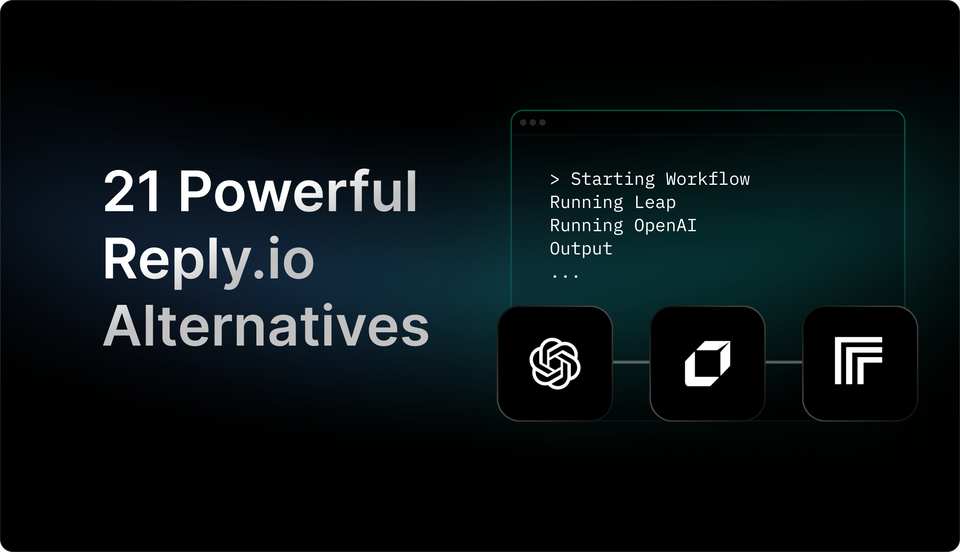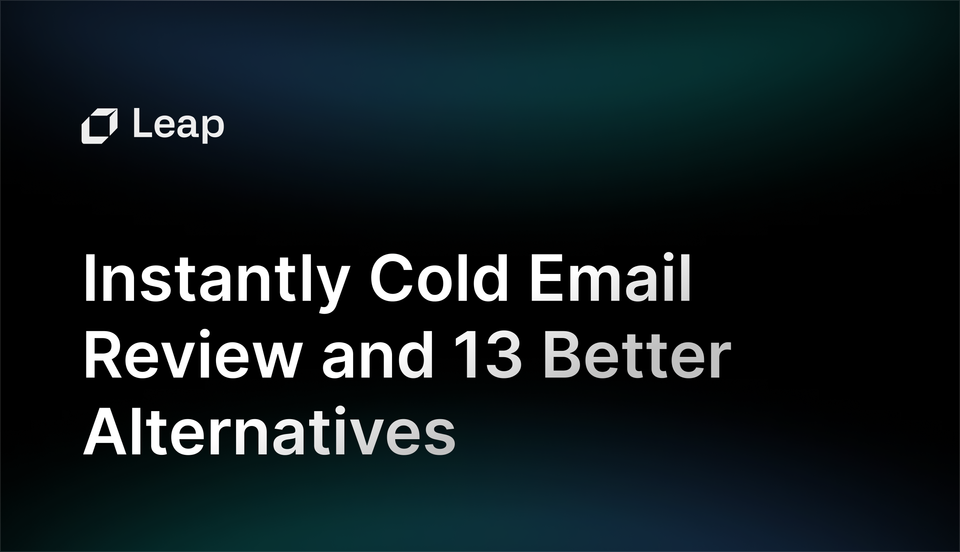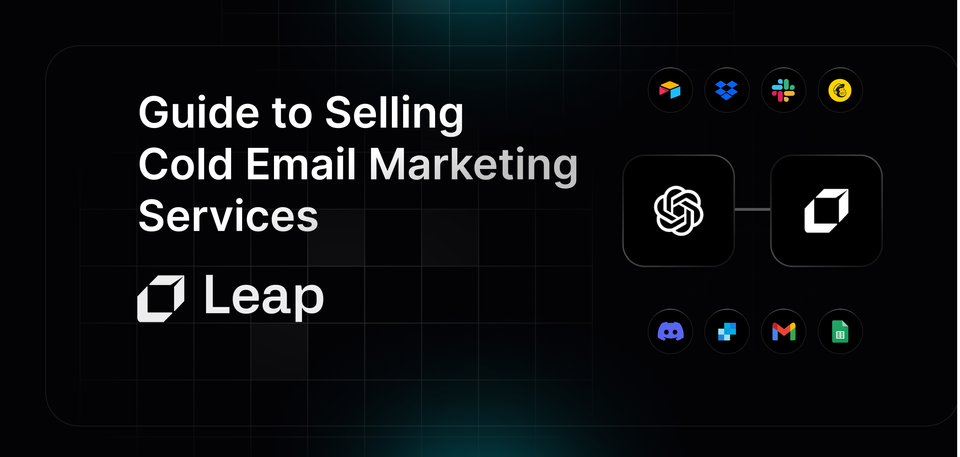Step-By-Step Guide On Creating An Effective Cold Email Sequence
Learn how to craft a successful cold email sequence with this comprehensive guide. Increase your response rates and drive more conversions today.
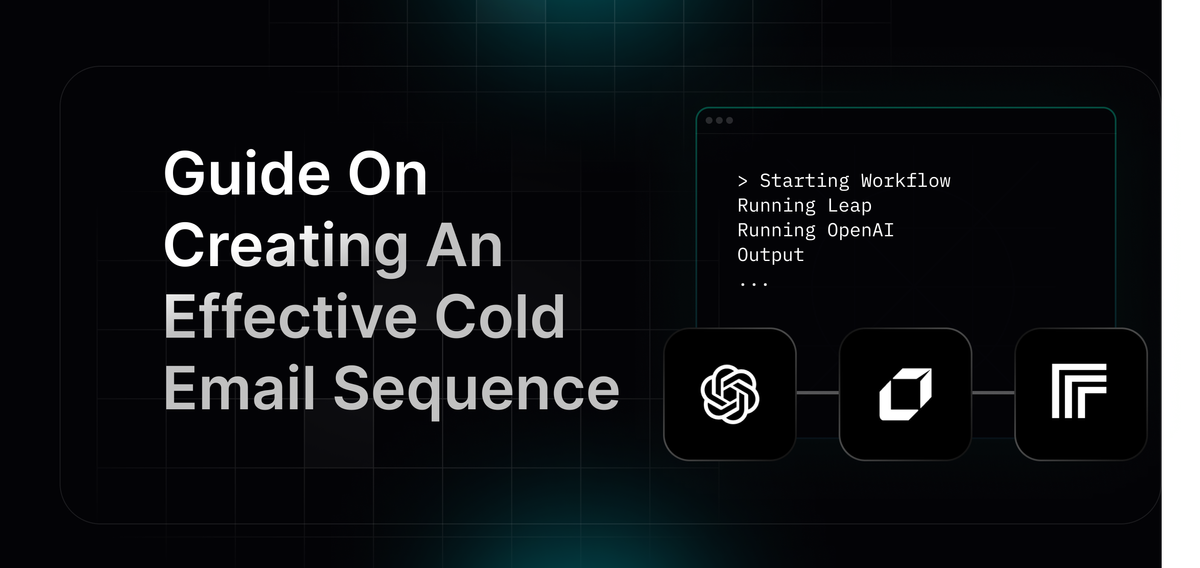
Are you tired of sending out cold emails only to get radio silence in return? Crafting an effective cold email sequence is a skill that every marketer should master. This powerful tool propels you through a series of automated emails that captivate your audience's interest and compel them to take action. Discover the secrets of creating a winning cold email sequence that will resonate with your audience and drive conversions. Whether you're a seasoned email pro or just starting, our blog has something for you! Let's dive in and get your email game on point!
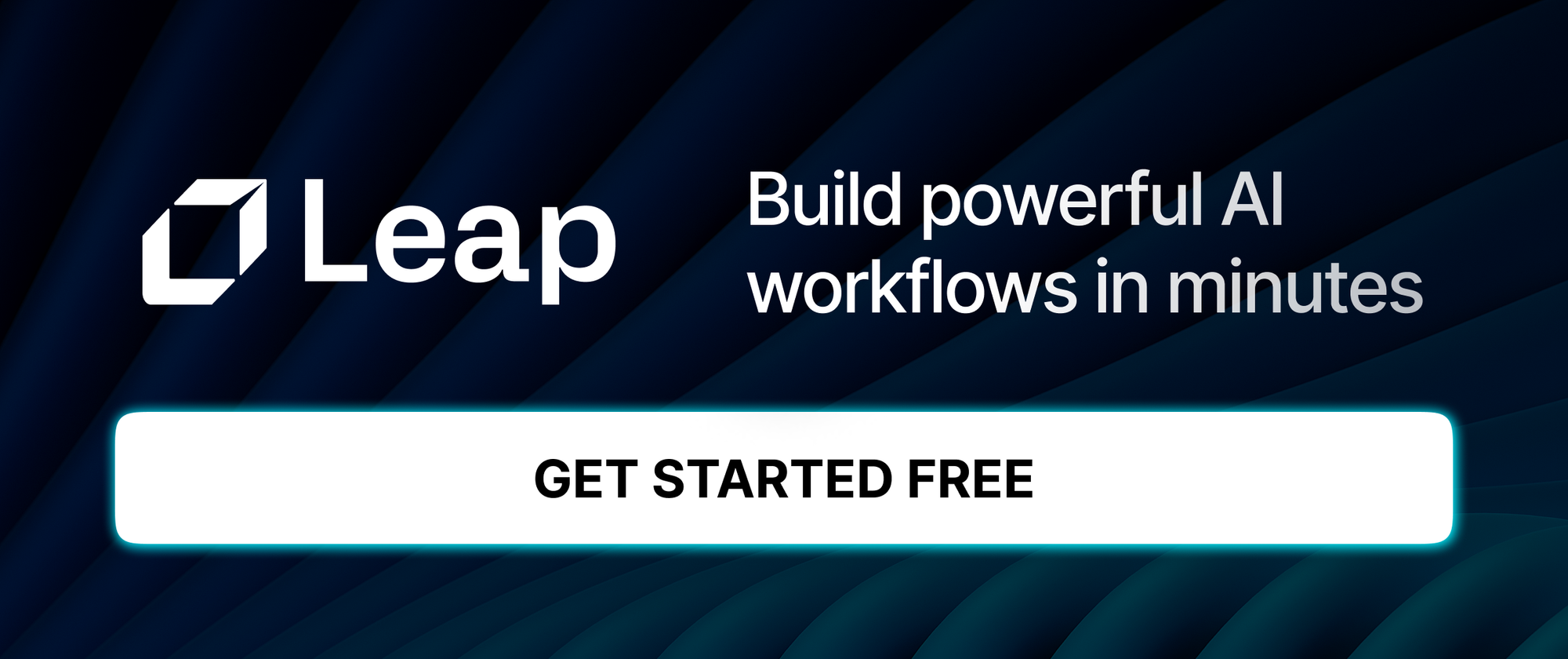
What Ia A Cold Email Sequence?

Lead Generation
Cold email sequences are a strategic series of personalized emails sent to prospects with whom the sender has no prior relationship, aiming to initiate contact, build relationships, and ultimately convert leads into customers. They are effectively used for generating leads by targeting specific individuals or businesses with tailored messages. Leap helps you to automate your work with the power of AI.
Conversion
Cold email sequences are effective in converting leads into customers by nurturing relationships and providing value through personalized communication. When executed correctly, they can provide a higher return on investment (ROI) by tracking metrics like open rates, reply rates, and conversions.
Automate the cold email creation and sending process with Leap’s AI Workflows.
Cost-Effective
Compared to traditional marketing methods, cold email sequences require minimal investment in advertisements and referrals. They help in targeting specific prospects with personalized messages, increasing response rates.
Create sophisticated AI automations with no-code using Leap’s AI Workflows tool for free today.
Better ROI
Cold email sequences are cost-effective and provide metrics for open rates, reply rates, and conversions, allowing for campaign optimization. Supercharge your existing tools with seamless AI integrations to OpenAI, Microsoft, and more with Leap Workflows.
Targeted Approach
Cold email sequences allow for targeting specific prospects with personalized messages, increasing response rates. Connect the tools you love with best-in-class AI text, image, and audio models using Leap’s AI Workflows tool for free today.
Scalability
Cold email sequences enable reaching a large number of potential clients quickly and efficiently. Partnered with Zapier, Vercel, and more, Leap enables you to supercharge your work by allowing you to create custom AI automations.
Trackable Results
Cold email sequences provide metrics for open rates, reply rates, and conversions, allowing for campaign optimization. Automate anything with Leap Workflows.Leap helps you to automate your work with the power of AI. Connect the tools you love with best-in-class AI text, image, and audio models using Leap’s AI Workflows tool for free today.

Related Reading
What Are The Key Components of a Cold Email Sequence?

Subject Line: The Hook for Your Email
One of the most critical parts of a cold email is its subject line. The subject line should be compelling and relevant to the recipient's interests, needs, or pain points to encourage them to open the email. A good subject line will tempt the reader, making them curious to learn more about the contents of the email.
Personalized Information: Tailoring Your Message
Personalization is key. By using the recipient's name, referencing their company, or mentioning a recent achievement of theirs, you can show you've done your homework. Personalization allows you to tailor the email to align with the recipient's interests or needs, increasing the chance they will find your email relevant and persuasive.
Brief Introduction: The Icebreaker
A well-crafted email introduction should swiftly introduce yourself and the purpose of your email. This should explain why you are reaching out and why the recipient should care. If your introduction is too lengthy or unclear, you risk losing the recipient’s attention and the opportunity to engage them further.
Value Proposition: Demonstrating Value
A good cold email should clearly articulate what you offer and how it can benefit the recipient. By demonstrating differentiation and explaining what sets you apart from others, you provide a compelling reason for the recipient to choose you over the competition.
Social Proof: Building Credibility
Including brief examples, testimonials, or case studies in your email demonstrates success with similar clients or projects, building credibility and trust with the recipient. Social proof can be a powerful tool in convincing potential clients of your capabilities and expertise.
Call to Action: Guiding the Recipient
A call-to-action CTA directs the recipient towards a specific action, such as scheduling a call, signing up for a demo, or visiting a website for more information. Including a CTA makes it easy and compelling for the recipient to take the next step, moving them further down the funnel towards conversion.
Closing and Signature: Ending Professionally
A professional closing and signature are vital to the effectiveness of your cold email. Ending with a professional sign-off that matches the tone of your email is crucial. Including your contact information in the signature makes it easy for the recipient to follow up or get in touch if they are interested.
Follow-Up Emails: Persistence Pays Off
Planning a sequence of follow-up emails is crucial if there is no response to your initial cold email. Each follow-up should add value or provide new information, rather than simply asking if the recipient has read your previous email. By spacing out follow-ups strategically, you can remain persistent without being annoying, increasing your chances of engaging potential clients or partners.
Leap helps you to automate your work with the power of AI
Partnered with Zapier, Vercel, and more, Leap enables you to supercharge your work by allowing you to create custom AI automations. Create sophisticated AI automations with no-code. Connect the tools you love with best-in-class AI text, image, and audio models.
Supercharge your existing tools with seamless AI integrations to OpenAI, Microsoft, and more. From summarizing documents, to voice translation, to AI call transcription, to AI avatar and asset generation, to SEO automation, to even automating the cold email creation and sending process, automate anything with Leap Workflows. The opportunities for automation are endless with Leap workflows.
Try Leap’s AI Workflows tool for free today.
What Are The Qualities of a High-Converting Cold Email Sequence?

Engages Prospects
Building trust and rapport is key to converting prospects through cold email sequences. By sending a series of emails, you can gradually build a relationship with your leads, making them more receptive to your sales pitch.
This way, the prospect doesn't feel bombarded with a hard sell right from the start. Instead of treating them as just another name on your list, you're taking the time to get to know them and their needs, building connections that can lead to long-term relationships.
Ensures a Well-Structured Approach
A successful cold email sequence isn't just about sending a few random emails and hoping for the best. Instead, it's a well-thought-out process that guides your prospect through different stages of the sales cycle.
Each email should seamlessly flow into the next, with a clear goal in mind for each step of the sequence. By having a structured approach, you can ensure that your emails are aligned with your sales process and are more likely to resonate with your prospects.
Nurtures Prospects
Jumping straight into a sales pitch in your first email is a surefire way to get your prospects to hit the delete button. Instead, you need to take a softer approach and nurture them through the sales process.
By gradually introducing your product or service and educating your prospects on how it can solve their pain points, you're more likely to pique their interest. This way, when you finally make your pitch, they're more receptive and ready to buy.
Leap helps you to automate your work with the power of AI
Partnered with Zapier, Vercel, and more, Leap enables you to supercharge your work by allowing you to create custom AI automations. Create sophisticated AI automations with no-code. Connect the tools you love with best-in-class AI text, image, and audio models.
Supercharge your existing tools with seamless AI integrations to OpenAI, Microsoft, and more. From summarizing documents, to voice translation, to AI call transcription, to AI avatar and asset generation, to SEO automation, to even automating the cold email creation and sending process, automate anything with Leap Workflows. The opportunities for automation are endless with Leap workflows.
Try Leap’s AI Workflows tool for free today.
Step-By-Step Guide On How To Create An Effective Cold Email Sequence

1. Define Your Objective
Defining your objective is crucial when creating a cold email sequence. It is essential to establish clear goals. What do you want to achieve with your cold email sequence? Do you want to book meetings, generate leads, or promote a product or service? Identifying your target audience is equally important as it will help you tailor your message effectively.
2. Research Your Audience
Researching your audience is key to personalizing your emails effectively. Gather information about your targets and look into their business, role, recent achievements, or any mutual connections. Segmenting your list is essential as not all recipients will have the same interests or needs.
3. Craft Your Opening Email
The opening email is your first impression, so make it count. Create a compelling subject line that encourages recipients to open the email. Personalize the opening lines to show you've done your research. Briefly introduce yourself and your organization, clearly articulate your value proposition, and include a clear and concise call to action
4. Design the Follow-Up Sequence
A follow-up sequence typically includes 3-7 emails spaced out over several weeks. Each email should offer new information, a different angle on your value proposition, or additional social proof. Avoid repeating the same message and adjust the tone and content based on the response (or lack thereof) to earlier messages.
5. Schedule Your Emails
Timing and frequency are critical when scheduling your emails. Choose optimal times and days to send your emails, based on your audience's likely schedule. Determine the frequency of follow-ups and wait 2-3 days before the first follow-up, then extend the interval between subsequent emails.
6. Include Clear Calls to Action
Every email in the sequence should guide the recipient on what to do next. Ensure the action you want the recipient to take is clear and easy to execute.
7. Monitor and Optimize
Track the performance of your emails using email tracking tools to monitor opens, clicks, replies, and conversions. Experiment with different subject lines, email content, and send times through A/B testing to see what works best. Use the insights gained from your metrics and any direct feedback from recipients to refine your cold email sequence.
8. Ensure Compliance
Follow regulations when sending cold emails. Make sure your email practices comply with laws like the CAN-SPAM Act in the U.S. or GDPR in Europe, including requirements like providing a way for recipients to unsubscribe.
Related Reading
- Cold Email Deliverability
- Best Time To Send Cold Emails
- Cold Email Tips
- Cold Email Follow Up
- Best Subject Line For Cold Emails
- Cold Email To Potential Client
- How Long Should A Cold Email Be
- Cold Email Conversion Rate
- How Many Cold Emails To Send Per Day
- Cold Email Best Practices
- Cold Email Lead Generation
- Personalized Cold Email Examples
- Cold Outreach Strategy
- Personalized Outreach At Scale
- Cold Email Call To Action
- Best Cold Email Opening Lines
How To Automate Your Cold Email Sequence With Cold Email Software
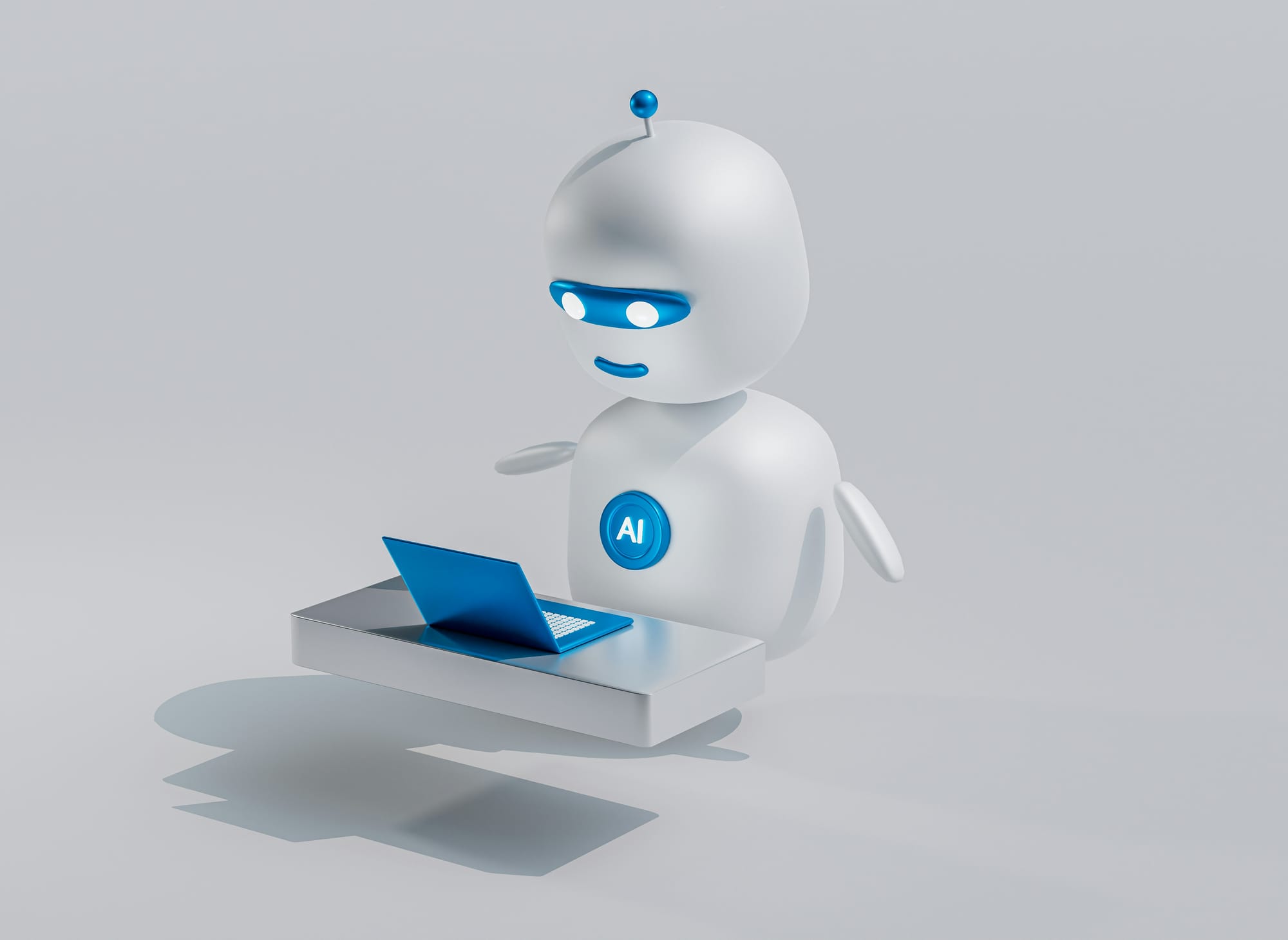
Conducting in-depth research on cold email software options to find a tool that fits your unique needs. Key considerations include automation capabilities, personalization features, analytics functionality, and integration with your Customer Relationship Management (CRM) platform and other essential tools you use for your outreach efforts.
Make the most of free trial periods offered by many platforms to evaluate how well a particular software aligns with your requirements. This practical, hands-on approach allows you to test the ease of use, deliverability, and effectiveness of the software before committing to a subscription.
Setting Up Your Campaign
After selecting the right cold email software to meet your needs, the next step is to import your segmented contact list into the software. It is crucial to ensure you have the necessary permission to email these contacts, in compliance with regulations like the General Data Protection Regulation (GDPR) and Controlling the Assault of Non-Solicited Pornography And Marketing (CAN-SPAM) Act.
Leverage the software's personalization capabilities to insert dynamic content such as names, company names, or other relevant details into your emails. This level of personalization can significantly improve the engagement rates of your cold email sequences.
Creating Your Email Templates
Drafting your email sequence is a critical step in the automation process. This includes writing the initial email and crafting follow-ups that are sent based on recipient actions. Most cold email software allows you to create multiple templates tailored for different purposes or audience segments.
Personalization and customization are essential components of effective email outreach. Utilize template fields or custom variables for high-level personalization to ensure each recipient receives a message that resonates with them on a personal level.
Automating the Sending Schedule
In this phase, you set up the sending schedule for your email sequence. Determine when the first email will go out and the intervals between subsequent follow-up emails. Some software platforms offer the option to set up triggers based on recipient actions, like sending a specific follow-up email if an initial email is opened or a link within the email is clicked. By automating the sending schedule, you can ensure your cold email sequence runs smoothly and efficiently without constant manual intervention.
Monitoring and Optimizing Your Campaigns
Utilize the analytics features within your cold email software to monitor essential metrics like open rates, click-through rates, responses, and conversions. This data is invaluable in evaluating the effectiveness of your email sequences and identifying areas for improvement.
Most platforms also offer A/B testing capabilities, allowing you to experiment with different subject lines, email content, Calls-To-Action (CTAs), and sending times to optimize your outreach results.
Refining Your Approach Based on Data
Leverage insights from your campaigns to refine your email content, personalization levels, and sending timing for future email sequences. Consider further segmenting your audience based on their interactions with your emails to create more targeted follow-ups. This continuous refinement process allows you to optimize your cold email sequences and achieve better results with each outreach campaign.
How Long Should A Cold Email Sequence Be?

The ideal length of a cold email sequence typically varies depending on your industry, target audience, and specific goals. In general, the recommended range falls between 3 to 7 emails. For most campaigns, 3 to 5 emails strike a balance between making enough contact to be noticed and not overwhelming the recipient.
Extending the sequence to 6 or 7 emails might be necessary for longer sales cycles or more complex offerings to fully convey your value proposition and build enough familiarity.
Soft Break-Up Email
If you still haven’t received a response after multiple emails in your sequence, a soft break-up email can be effective. This email indicates that you won’t be emailing them again but leaves the door open for future communication. This often prompts a response from recipients who may have been too busy to reply earlier.
Re-Engagement Email
After a few months, you might choose to re-engage those who never responded with new information, updates about your product or service, or another piece of valuable content. This optional step can help reignite interest from contacts who might have overlooked your initial emails.
Flexibility and A/B Testing
Flexibility is key when it comes to cold email sequences. The guidelines for the length of a sequence are not one-size-fits-all. The best approach is to start with a sequence within the recommended range and adjust based on the data you collect. A/B testing different sequence lengths and content strategies will help you refine your approach and identify the most effective sequence for your specific goals.
Related Reading
- Ai Sales Tools
- Cold Email Software
- Lemlist Alternative
- Mailshake Alternative
- Cold Email Marketing Services
- Cold Email Marketing Agency
- Instantly Cold Email
- Reply.io Alternatives
- Woodpecker Alternatives
Create Game Changing Automations Today With Leap’s AI Workflows
Interacting with clients and leads can be time-consuming and overwhelming, especially when you have to send numerous cold emails. That's where Leap Workflows come in – a tool that enables you to create custom AI automations without any coding. With Leap Workflows, you can connect your favorite tools to supercharge your work and get your messages across effortlessly.
Building a Cold Email Sequence
Crafting the perfect cold email sequence is an art that requires a refined strategy. With Leap Workflows, you can automate this process, saving you time and effort while enhancing your outreach effectiveness.
From creating engaging subject lines to crafting personalized messages, Leap Workflows can streamline your cold email creation process, making it more efficient and tailored to your audience.
Optimizing Cold Email Content
When reaching out to prospects, delivering the right message is crucial. Leap Workflows can help you optimize your cold email content by providing AI-powered suggestions to enhance engagement rates. By leveraging AI capabilities, you can ensure that your cold emails are compelling, personalized, and resonant with your target audience's needs and preferences.
Personalization at Scale
Personalization is key to effective cold emails, but tailoring messages for each prospect can be daunting. Leap Workflows allows you to personalize your cold emails at scale by using advanced AI models. By creating custom automations that personalize your emails based on recipient data, you can boost engagement and increase your chances of conversion.
Seamless Integration with Existing Tools
No need to switch between platforms to send cold emails – Leap Workflows seamlessly integrates with the tools you already use. By connecting to popular software like Zapier and Vercel, Leap enhances the capabilities of your existing tools and makes your workflow more efficient. With its easy-to-use interface, you can automate your cold email sequence without the need for extensive technical knowledge.
Enhancing Email Deliverability
Getting your emails in front of your recipients is crucial for the success of your cold email campaigns. Leap Workflows can help you optimize your email deliverability by offering AI-powered suggestions and best practices. By fine-tuning your cold email sequence with Leap Workflows, you can increase the chances of your messages landing in your prospects' inboxes and boost your response rates.

